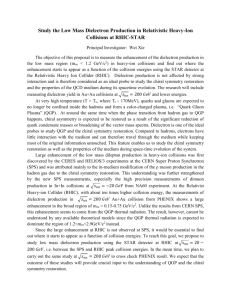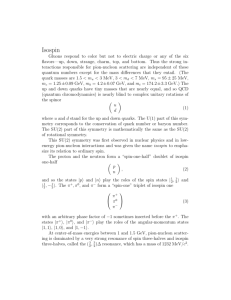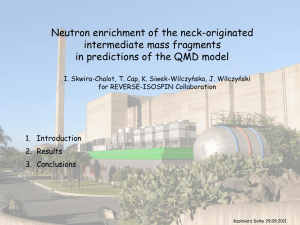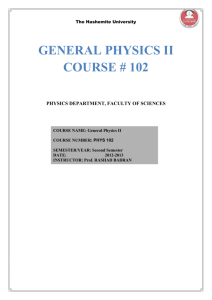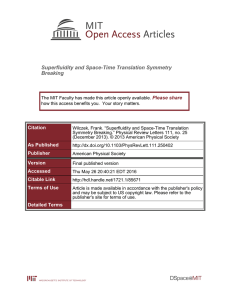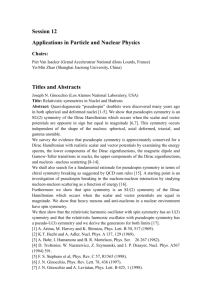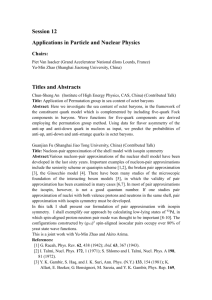Suneel Kumar (Thapar Univ., India)
advertisement
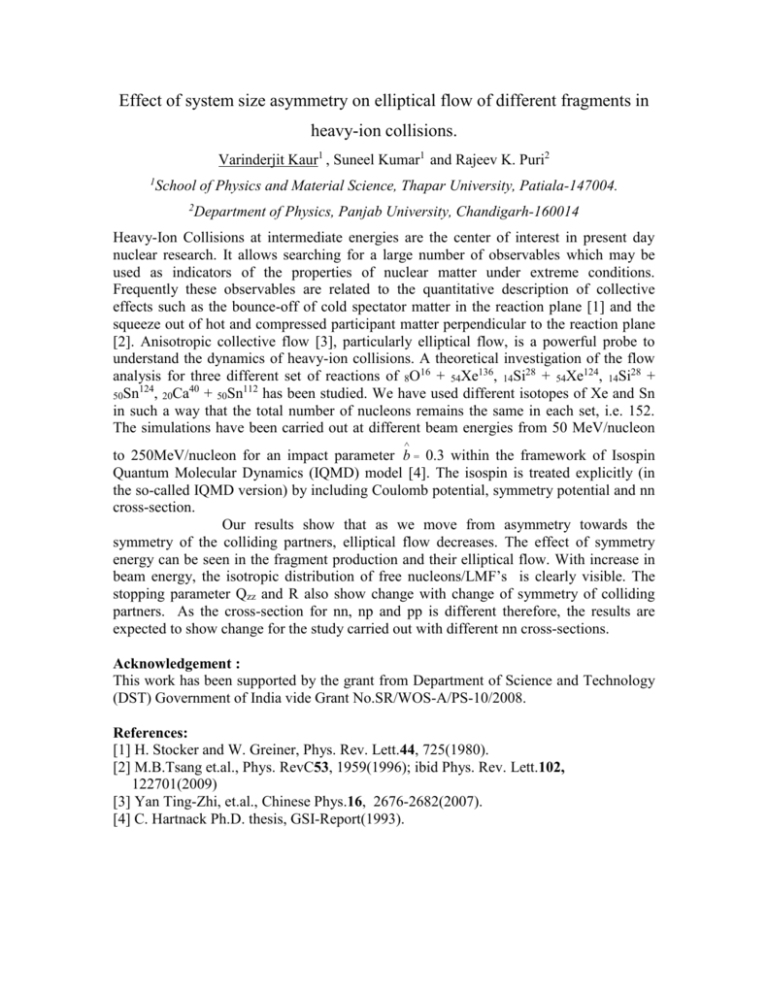
Effect of system size asymmetry on elliptical flow of different fragments in heavy-ion collisions. Varinderjit Kaur1 , Suneel Kumar1 and Rajeev K. Puri2 1 School of Physics and Material Science, Thapar University, Patiala-147004. 2 Department of Physics, Panjab University, Chandigarh-160014 Heavy-Ion Collisions at intermediate energies are the center of interest in present day nuclear research. It allows searching for a large number of observables which may be used as indicators of the properties of nuclear matter under extreme conditions. Frequently these observables are related to the quantitative description of collective effects such as the bounce-off of cold spectator matter in the reaction plane [1] and the squeeze out of hot and compressed participant matter perpendicular to the reaction plane [2]. Anisotropic collective flow [3], particularly elliptical flow, is a powerful probe to understand the dynamics of heavy-ion collisions. A theoretical investigation of the flow analysis for three different set of reactions of 8O16 + 54Xe136, 14Si28 + 54Xe124, 14Si28 + 124 40 112 has been studied. We have used different isotopes of Xe and Sn 50Sn , 20Ca + 50Sn in such a way that the total number of nucleons remains the same in each set, i.e. 152. The simulations have been carried out at different beam energies from 50 MeV/nucleon to 250MeV/nucleon for an impact parameter b = 0.3 within the framework of Isospin Quantum Molecular Dynamics (IQMD) model [4]. The isospin is treated explicitly (in the so-called IQMD version) by including Coulomb potential, symmetry potential and nn cross-section. Our results show that as we move from asymmetry towards the symmetry of the colliding partners, elliptical flow decreases. The effect of symmetry energy can be seen in the fragment production and their elliptical flow. With increase in beam energy, the isotropic distribution of free nucleons/LMF’s is clearly visible. The stopping parameter Qzz and R also show change with change of symmetry of colliding partners. As the cross-section for nn, np and pp is different therefore, the results are expected to show change for the study carried out with different nn cross-sections. Acknowledgement : This work has been supported by the grant from Department of Science and Technology (DST) Government of India vide Grant No.SR/WOS-A/PS-10/2008. References: [1] H. Stocker and W. Greiner, Phys. Rev. Lett.44, 725(1980). [2] M.B.Tsang et.al., Phys. RevC53, 1959(1996); ibid Phys. Rev. Lett.102, 122701(2009) [3] Yan Ting-Zhi, et.al., Chinese Phys.16, 2676-2682(2007). [4] C. Hartnack Ph.D. thesis, GSI-Report(1993).




